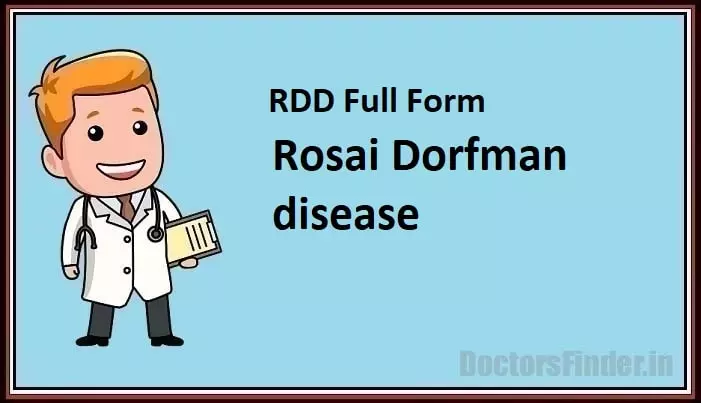The full form of RDD in medical term is “Rosai–Dorfman disease.”
Rosai-Dorfman disease is also referred to as sinus histiocytosis with massive lymphadenopathy, is a rare noncancerous disorder that affects the lymph nodes. Still, it can also affect other body parts, such as the skin, soft tissues, bones, and central nervous system. Juan Rosai and Ronald Dorfman in 1969 first described it.
The exact cause of Rosai-Dorfman’s disease is not fully understood, but it is believed to be related to the over activity of certain immune cells called histiocytes. The most common symptom of Rosai-Dorfman disease is enlarged lymph nodes, which can occur anywhere in the body but are typically found in the neck, armpits, or groin.
Diagnosis of Rosai-Dorfman disease typically involves a physical exam and imaging tests such as X-rays or CT scans and a biopsy of the affected tissue.
The biopsy can help to confirm the presence of histiocytes and rule out other possible causes of the symptoms.
Treatment for Rosai-Dorfman’s disease depends on the severity of the symptoms and the extent of the disease. However, if the disease is causing significant symptoms or complications, treatment may include steroids or other immunosuppressive drugs, radiation therapy, or surgery to remove affected lymph nodes or other tissues.

In some cases, the disease may be more severe, require more aggressive treatment, or have a more guarded prognosis. Regular follow-up with a healthcare provider is recommended.